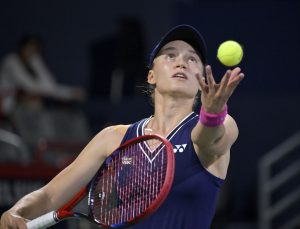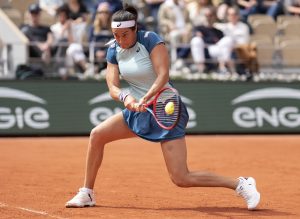COVID-19 has caused the tennis world to come to a halt. All tournaments, whether they be Wimbledon or an ITF $15k, have been cancelled until July 13th, at the earliest.
Yet the impact across the tennis world will not be so uniform. Roger Federer was injured going into the coronavirus pandemic, but even so, with $450 million as his net worth, can afford to miss some time. On the WTA side, Serena Williams, with a net worth of $180 million, also won’t be economically devastated by the shut down.
But, what about Sofia Shapatava? The WTA World No. 375 whose earnings this year are not even $3000, told CNN Sport, “It’s very hard and very scary.” Shapatava is trying to gain support for a petition for the ITF to help tennis players struggling financially.
Patrick Mouratoglou has also called for major changes in tennis for lower-ranked players. Mouratoglou posted on Twitter with disgust at the current situation for tennis players ranked 100 and above.
Mouratoglou stated, “…I would love to see the ATP, the WTA, the ITF, and the Grand Slams sit together [albeit virtually] to try and find a sustainable solution. We rely on those governing bodies, who have the power to protect the professional tennis economy and hold social responsibility.”
There’s clearly a surge for wanting change in the tennis universe. Yet, what realistic solutions are in place where tennis could help players on ATP Challenger Tour, ATP Futures Tour, and WTA ITF Circuit?
First, you have to think about who exactly would be getting the money. Should the 100th ranked player be getting as much as the 500th ranked player? Or should there be a sliding scale based on potential earnings given one’s ranking? If there is a sliding scale, where should the cutoff(s) be?
An idea that has crossed my mind is for something similar to the United States government’s stimulus checks giving out $1200 to many Americans. I’m not an economist nor a political scientist, so I don’t intend to get into the details. But, the idea that the tennis powers could get together and provide some form of financial boost to lower-ranked players is an enticing one.
Again, though, where would we draw the line? Would 100-300 get a certain amount, 300-500 a different amount, etc.? Do the ATP, WTA, and ITF even have the financial capacity to create such a stimulus package? There’s so many unanswered questions with how you can reasonably support lower-ranked players when the infrastructure needed to easily provide that support is not there.
The ITF seems less likely to be able to provide support, given the ITF’s salary reductions occurring within the organization.
As stated by the Associated Press, the WTA’s head, Steve Simon, has already come out and dampened the possibility of giving money to players. Simon stated that the WTA can’t give money to, “everyone, especially those in need the most…at the level they were expecting.”
However, while the WTA does say that, the wording of Simon’s quote makes it seem like they might be able to provide some form of support in a properly structured deal. Anything is better than nothing.
Another potential option, being discussed by the tennis powers, is to just cut down on the offseason. I would even suggest completely foregoing the offseason at the end of the year and play straight into 2021, if COVID-19 allows. While this wouldn’t give players economic stability right now, it would give them more opportunities in the future to make money.
Of course, if COVID-19 is still a huge problem towards the end of 2020, then this won’t be possible. But, if the virus starts to subside and players can get in an additional four or so tournaments, then money that was supposed to come in March and April could be substituted for money in November and December.
This also wouldn’t help players who compete in lower ITF events, as those events essentially occur year-round.
The vast majority of tennis players already struggle to finance their careers, as is. Take the ATP’s Burnie Challenger, for instance. A first round singles and doubles loser in Burnie would take home a combined $440. That’s $260 for singles and $180 for doubles ($360 divided by two).
Given all of the costs associated with tennis, the flights, the player’s team, cost of injuries, then $440 is a minuscule amount, and taxes are still to come.
Now, take away even the $440 and things start to get dire.
Of course, it’s not just the players suffering. Lower-level umpires and many linespeople also lost work due to COVID-19. If some plan is worked out to help out the players, if possible, getting these people some form of compensation would be tremendous.
The LTA (British tennis association) is taking steps in this direction. The organization is giving out approximately 20 million pounds to those suffering greatly in the tennis world.
Ultimately, the best way to find some sort of compensation package is to have unity in tennis. It was very encouraging to see the WTA and ATP create a Tennis United video series. Hosted by WTA player Bethanie Mattek-Sands and ATP player Vasek Pospisil, the series is a collaboration between the tours designed to provide entertainment during COVID-19.
While, obviously, this is just a video series, but it is a good start for the tours working together with coronavirus in the background. If we are going to have some form of economic solution for tennis in response to this crisis, then coordination among those in charge of tennis will be vital.
Of course, this article doesn’t provide firm, fool-proof suggestions for how to handle lower-ranked players in the wake of coronavirus. But, hopefully we can continue to keep everyone in our thoughts during this time, not just the top 10 in the ATP and WTA rankings.
Non-superstars, like Sofia Shapatava, deserve support too.
Main Photo from Getty.






